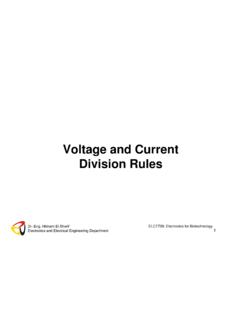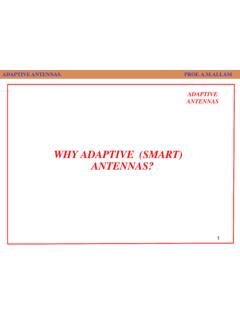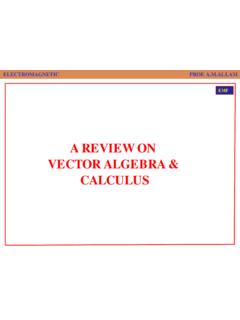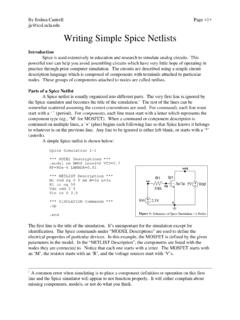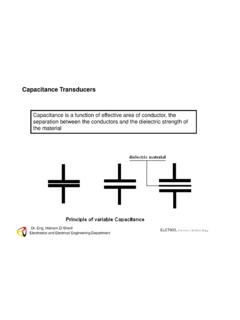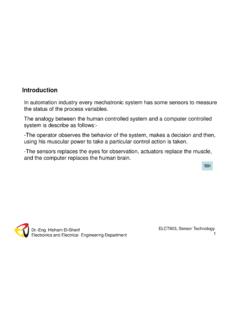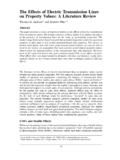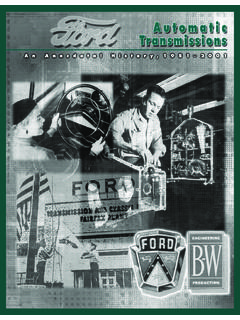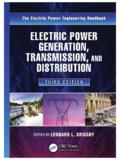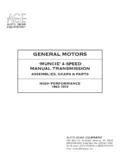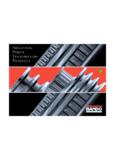Transcription of Modeling of Transmission Lines - GUC
1 Modeling of Transmission Lines Electric Power Transmission The electric energy produced at generating stations is transported over high-voltage Transmission Lines to utilization points. The trend toward higher voltages is motivated by the increased line capacity while reducing line losses per unit of power transmitted. The reduction in losses is significant and is an important aspect of energy conservation. Better use of land is a benefit of the larger capacity. Concept of Transmission Transmission line PARAMETERS. An electric Transmission line is modeled using series resistance, series inductance, shunt capacitance, and shunt conductance.
2 The line resistance and inductive reactance are important. For some studies it is possible to omit the shunt capacitance and conductance and thus simplify the equivalent circuit considerably. Factors affecting line parameters The main factors are 1. Voltage level. 2. line length. 3. type of conductor used. 4. Number of conductors. 5. the spacing of the conductors as they are mounted on the supporting structure. Types of Conductors There are many types of cables and they include: Aluminum Conductors; Homogeneous designs;. Composite designs ; Expanded ASCR (Al Steel Core). Steel Conductors Galvanized steel conductors with various thicknesses of zinc coatings are used.
3 ACSR. line Resistance The resistance of the conductor is the most important cause of power loss in a power line . Direct-current resistance is given by : = resistivity of conductor, l = length , A = cross-sectional area There are several factors that affect the value of the DC line resistance. Factors affecting line resistance 1. Conductor stranding. 2. Skin Effect : When ac flows in a conductor, the current is not distributed uniformly over the conductor cross- sectional area. This is called skin effect and is a result of the non-uniform flux distribution in the conductor. This increases the resistance of the conductor. Temperature effect The resistivity of any metal varies linearly over an operating temperature, and therefore the resistance of any conductor suffers the same variations.
4 As temperature rises, the resistance increases linearly, according to the following equation: line INDUCTANCE. The inductive reactance is by far the most dominating impedance element. The inductance depends on the size of the conductors, the spacing between the conductors, transposition, the arrangement of conductors and the material of each conductors. Several arrangements are used in modern Transmission systems. Conductors' Arrangement HV Tower Calculation of line Inductance Bundled Conductors Inductance of a Balanced Three-Phase Transposition of line Conductors There is a need for equalizing the mutual inductances. One means for doing this is to construct transpositions or rotations of overhead line wires.
5 A transposition is a physical rotation of the conductors, arranged so that each conductor is moved to occupy the next physical position in a regular sequence such as a-b-c, b-c-a, c-a-b, etc. line CAPACITANCE. The line capacitance is a leakage (or charging) path for the ac line currents. The capacitance of a Transmission line is the result of the potential differences between the conductors themselves as well as potential differences between the conductors and ground. Charges on conductors arise, and the capacitance is the charge per unit potential difference. The charges on the conductors are time varying. The time variation of the charges results in what is called line - charging currents.
6 Capacitance of Single-Phase line Transmission line MODELS. A Transmission line is defined as a short-length line if its length is less than 80 km (50 mi). In this case, the capacitive effect is negligible and only the resistance and inductive reactance are considered. Assuming balanced conditions, the line can be represented by the equivalent circuit of a single phase with resistance Short Transmission line Medium If the line is between 80 km (50 mi) and 240 km (150 mi) long, the line is considered a medium length. The line single-phase equivalent circuit can be represented in a nominal or T configurations. The shunt capacitance of the line is divided into two equal parts, each placed at the sending and receiving ends of the line .
7 Both short- and medium-length Transmission Lines use approximated lumped-parameter models. Medium The Pi model of medium Transmission Lines Medium Z= R + jX. Y = j wC. T model of medium Transmission Lines Long If the line is more than 240 km long, the model must consider parameters uniformly distributed along the line . The appropriate series impedance and shunt capacitance are found by solving the corresponding differential equations, where voltages and currents are described as a function of distance and time with the assumptions: 1. The line is operating under sinusoidal, balanced, steady-state conditions. 2. The line is transposed. Long Parameters
